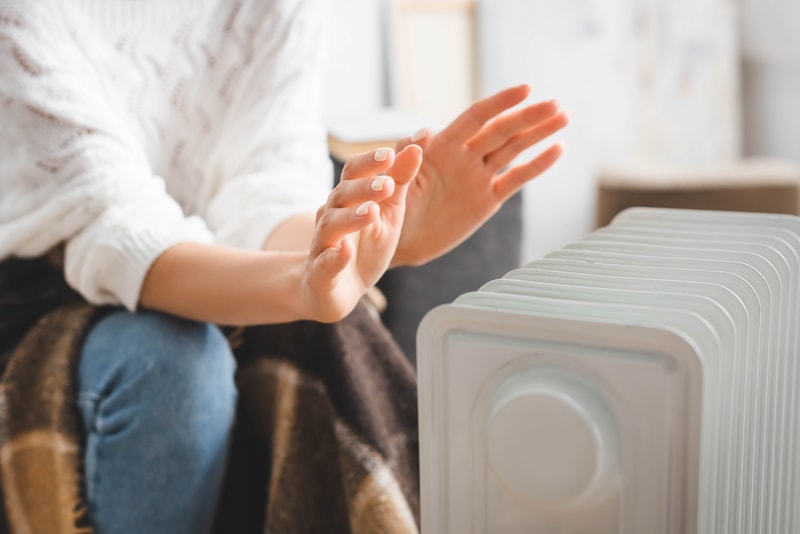I’ve had situations where I got cold hands, and I didn’t have to bother about it. Such situations include when I remove an item from the refrigerator and when I stay out too long without hand gloves in cold weather. However, if your hands get cold ordinarily in warm weather, you may be suffering from a disease that restricts blood flow to the hand, and you’ll need acupressure for circulation in the hands.
Normally, the ulnar and radial artery makes it possible for blood to flow to the hands. But when you’re in a cold environment, the muscles surrounding these two arteries tighten to conserve heat for your vital organs like the lungs. In the case where your hands feel cold without any cause, what happens is that your blood vessels are tightening suddenly.
Therefore, you’ll need to free up your blood vessels and restore the normal circulation of blood in the hands. In this article, I’ll show you how to improve blood circulation in the hands naturally with acupressure.
Can Acupuncture Increase Blood Circulation?

Yes, acupuncture can increase blood circulation in the hands and other parts of the body. It does this by stimulating the energy pathways in the body. Many studies support acupuncture for the increase in blood circulation.
One such study focused on the assessment of the effects of acupuncture on three arteries (peripheral, mesenteric, and retrobulbar) using Color Doppler imaging (CDI). The result of the research was that acupuncture affects the blood flow of these arteries. According to the research, the stimulation of ST-36 significantly increased the blood flow through the superior mesenteric artery.
Another research used speckle laser blood flow scanning technology to observe microcirculation of the area around acupoint Hegu (LI-4) after stimulating with acupuncture. This research discovered that after acupuncture stimulation, there was an increase in blood perfusion on 3 meridian acupoints, and the changes in Hegu or LI-4 were the most significant of the three.
Can Acupressure Improve Blood Circulation?
Acupressure and acupuncture techniques improve blood circulation as much as it increases blood circulation. According to Traditional Chinese Medicine (TCM), poor blood circulation occurs when the energy in the body is not sufficient enough to move the blood along. So, acupressure or acupuncture on certain acupoints will help energy to move again and facilitate blood circulation.
Acupuncture and acupressure techniques stimulate nitric acid that helps regulate localized circulation as well as leukotrienes and antihistamines that dilate the blood vessels and swelling of tissues. So, the overall effect of stimulating the acupressure points for blood circulation in the hands is that it will increase oxygenated blood in the hands.
Acupressure Points For Circulation In The Hands
Here are the four acupressure points to stimulate when you have cold hands, and you need blood to circulate back to your hands.
Acupoint: LI-4 (Other Names: Large Intestine-4/He Gu/Joining Valley)
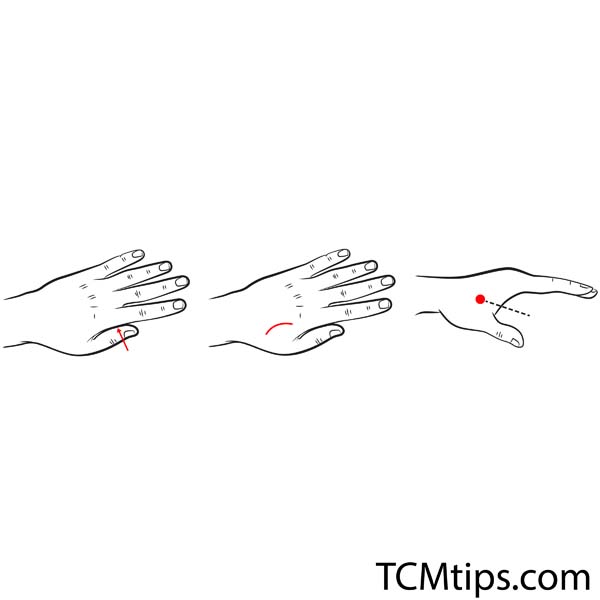
Acupoint LI-4 or Hegu is a vital acupressure point for bad circulation in the hands. It’s a large intestine acupoint that can be found in the hands. You’ll find LI-4 at the back of your hands, in the depression that is formed where the bones of the thumb and index finger meet.
In TCM, Hegu is regarded as the command point of the head and face. This means that it is very effective in treating conditions related to the face or head. This is why Hegi is clinically used to treat dizziness, facial paralysis, swelling of the face, and toothache in the lower jaw.
One study even shows that moxibustion stimulation at the Hegu acupoint benefits the lips of Bell’s palsy patients as well as improves global circulation. LI-4 is also one of the acupressure points for upper back pain.
Acupoint: TE-4 (Other Names: Triple Energizer-4/Yang Chi/Yang Pool)
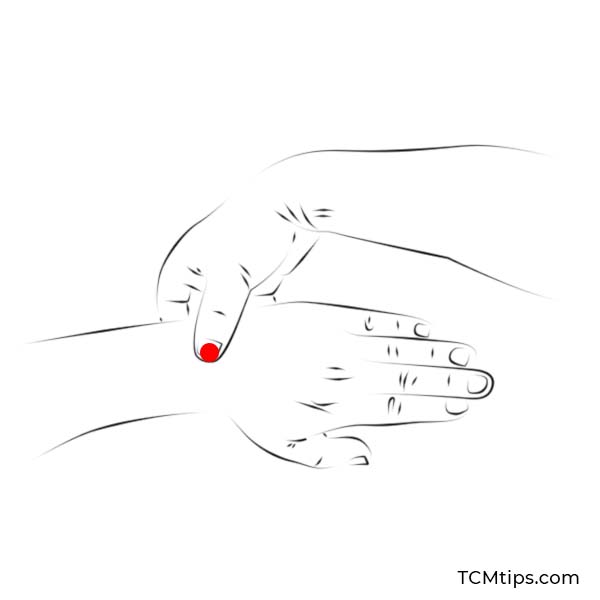
Another acupoint for acupressure for circulation in the hands that is worthy of note is TE-4 or Yangchi. This acupoint is located on the crease of your wrist, at the back of your hand. You’ll find it in the depression between the endpoints of the bones of your ring finger and the middle finger, on the crease of your wrist. It is one of the acupoints in the hand acupressure points chart.
In TCM, TE-4 is classified as the Yuan-Source point of the San Jiao Meridian. This means that it is crucial in treating diseases that affect the internal organs. For this reason, TE-4 is used clinically to treat diabetes, deafness, any pain in the wrist, rough skin, stiff shoulders, and even rheumatism.
Acupoint: SP-6 (Other Names: Spleen-6/San Yin Jiao/Three Yin Intersection)
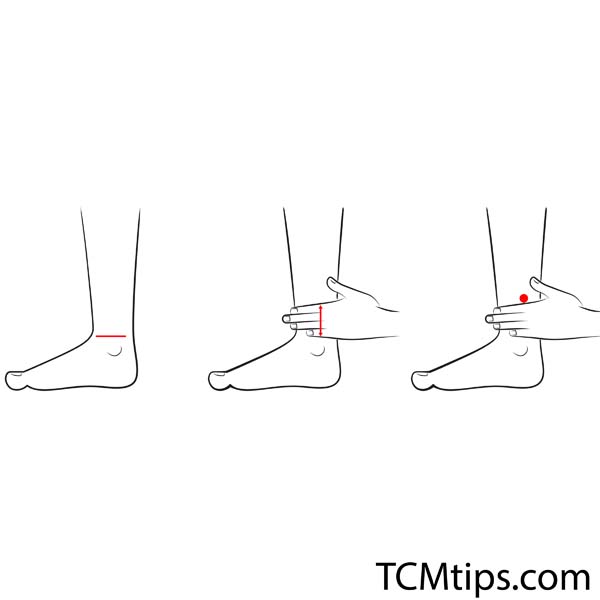
SP-6 is also known as Sanyinjiao in Chinese, and it is a spleen meridian acupoint that helps blood circulation in the hands. To locate SP-6, place four fingers on your ankle in a way that the little finger is resting on the apex point of your ankle. SP-6 is the depression behind the tibia, around your index finger.
In TCM, SP-6 is so important because of its classification as the crossing points of the Spleen, Kidney, and Liver Meridians. So, it helps to strengthen the spleen, stomach, liver, and kidneys. It is for this reason that SP-6 is used to treat ailments like infertility, dysmenorrhea, and dysuria.
SP-6 is especially important to women as it solves the issue of irregular menstruation. It is also one of the acupressure points for sleep apnea. To stimulate this acupoint to unlock its special benefits, use your thumb to touch the acupoint. Push it for up to five seconds, then release the pressure.
Acupoint: KI-1 (Other Names: Kidney-1/Yong Quan/Gushing Spring)
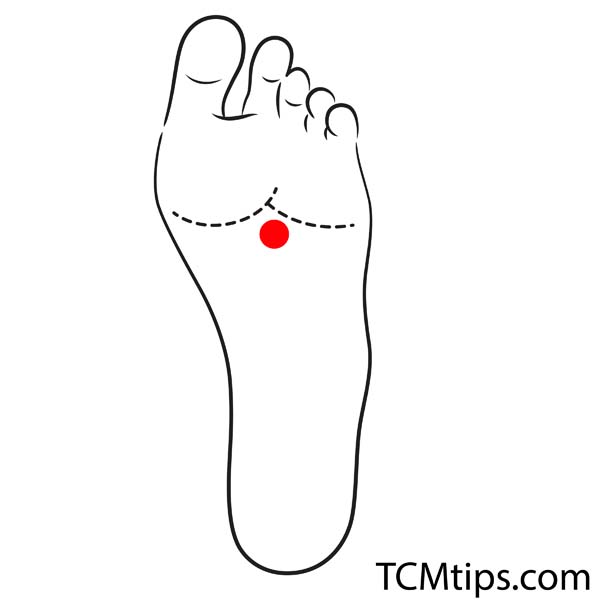
Acupoint KI-1, Yongquan, or Gushing Spring is a Kidney Meridian acupressure point that aids circulation in the hands. You’ll find this acupoint on the sole of the feet.
It is located in the slight depression formed at the sole of your feet when you point your feet backward, about one-third of the distance between the tip of your toes and the heels of your feet.
KI-1 is one of the acupressure points for depression. It is also effective in the treatment of neck pain, headache, dizziness, vomiting, dryness of the tongue, and constipation.

Try our Anti-Aging Gua Sha Tool designed to bring out your skin’s natural glow.
Best Gua Sha Product- Anti-Aging: The tool is designed to target 11 specific aging signs such as wrinkles and sagging skin. By following the 7-step routine, users can improve skin firmness and reduce fine lines naturally.
- Enhances Skincare Routine: It works effectively with serums and lotions, boosting absorption and efficacy of skincare products.
- Visible Skin Improvement: Users can expect a smoother complexion, reduced puffiness, and a more youthful appearance.
 P. Sze
P. Sze 